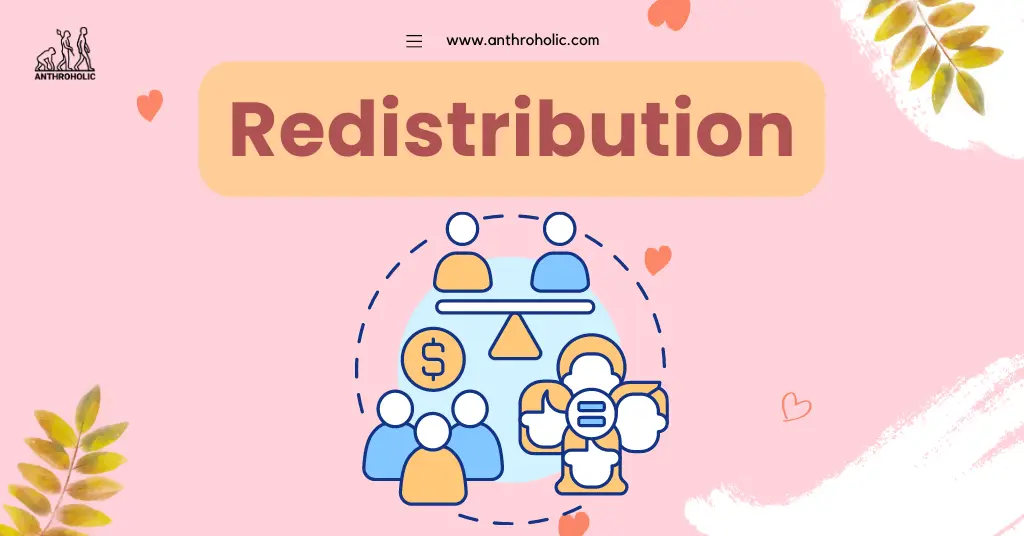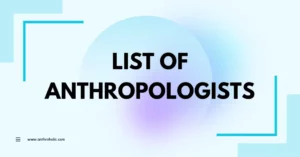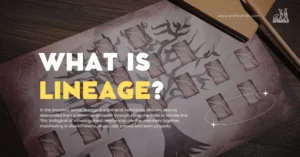AI Answer Evaluation Platform Live Now. Try Free Answer Evaluation Now
Redistribution
Redistribution, one of the main forms of economic exchange, refers to the gathering of goods or wealth by a central authority which is then re-distributed within the society [1]. In comparison with other forms of economic exchanges such as reciprocity and market exchange, it plays a unique role in the structure and function of pre-capitalist economies [2].

Evolution and Core Concepts of Redistribution
The concept of redistribution has evolved over centuries of human social and economic development. It is primarily associated with traditional societies that are organized around kinship-based social units. For instance, tribal chiefs or village heads often collect resources from community members, which are then redistributed to meet the needs of the entire community [3].
Roles of Redistribution
Redistribution, as a method of economic exchange, plays multiple roles:
- Facilitates social integration: Redistribution unifies societies by balancing the distribution of goods and wealth [4].
- Reduces economic inequality: It serves as a leveling mechanism that prevents extreme wealth and poverty [5].
- Supports social status: The central authority distributing goods often gains prestige, status, and power [6].
Redistribution in Various Societies
Different societies have used redistribution to varying degrees and for diverse purposes.
Melanesian Big-Man System
The Melanesian “Big Man” system is a classic example of a redistribution system. The Big Man earns prestige by giving away resources that he has persuaded or coerced others to give him. During a feast, or ‘moka’, he distributes these resources to attendees, thereby gaining status and authority [7].
| Society | Role of Redistribution |
|---|---|
| Melanesian Big Man System | Enhancement of social status |
North American Potlatch
The potlatch system among the Kwakiutl and other tribes of the American Northwest involved competitive feasts. Chiefs would host potlatches and distribute goods to their guests. This exchange system served to redistribute wealth and reaffirm social status [8].
| Society | Role of Redistribution |
|---|---|
| North American Potlatch | Reaffirmation of social status |
Modern Economic Systems and Redistribution
Today, redistribution is an integral part of modern economies, albeit in different forms than traditional societies.
Taxes and Public Services
In modern states, taxes are collected from individuals and businesses, and then redistributed in the form of public services like healthcare, education, and social security. This reduces inequality by shifting resources from the wealthy to those in need [9].
Universal Basic Income
Universal Basic Income (UBI) is another form of redistribution where every citizen receives a fixed income from the state. The money for UBI is generally raised through taxation, making it a form of wealth redistribution [10].
| Modern Economy | Role of Redistribution |
|---|---|
| Taxes and Public Services | Reduction of economic inequality |
| Universal Basic Income | Guaranteed income for all citizens |
Critiques of Redistribution
Redistribution as a method of economic exchange has garnered some criticism.
Inefficient Use of Resources
Some critics argue that redistribution can result in an inefficient use of resources [11]. They assert that central authorities may not have the complete knowledge to allocate resources most efficiently, potentially leading to waste.
Discourages Productivity
Critics also suggest that redistribution could disincentivize productivity. If individuals know they will receive goods and services irrespective of their output, they may be less motivated to work hard [12].
| Critiques | Explanation |
|---|---|
| Inefficient Use of Resources | Limited knowledge of central authorities may lead to wastage |
| Discourages Productivity | Reduced motivation to work due to guaranteed support |
Comparative Analysis with Other Forms of Economic Exchange
Redistribution, reciprocity, and market exchange form the main triad of economic exchanges [13]. Each has distinct characteristics and functions within different socio-economic contexts.
Reciprocity vs Redistribution
Reciprocity involves direct exchange between two parties. It functions mainly at an interpersonal level, unlike redistribution, which operates at a group or societal level [14].
Market Exchange vs Redistribution
Market exchange, where goods and services are exchanged based on prices determined by supply and demand, significantly differs from redistribution. Market exchange is usually impersonal and competitive, while redistribution is communal and cooperative [15].
| Type of Exchange | Characteristic | Function |
|---|---|---|
| Reciprocity | Direct, interpersonal exchange | Fosters social relations |
| Market Exchange | Impersonal, based on supply and demand | Allocates resources efficiently |
| Redistribution | Collective, managed by central authority | Promotes equality, social cohesion |
Future Implications and Prospects
In the face of growing global inequality, redistribution as an economic exchange mechanism is more relevant than ever. As societies grapple with wealth disparities and the associated social challenges, systems like progressive taxation and Universal Basic Income offer promising strategies to redistribute wealth more equitably [16].
However, to ensure success, policymakers must address the critiques of redistribution, ensuring it is implemented efficiently and without disincentivizing productivity.
Conclusion
Redistribution, as an economic exchange, has been an essential method for managing resources and maintaining social cohesion throughout human history. While its implementation differs among societies and economies, its central role remains the same – to facilitate equitable wealth distribution, reduce economic inequality, and maintain social harmony.
References
[1] Polanyi, K. (1957). The economy as instituted process. https://doi.org/10.4000/rccsar.309
[2] Sahlins, M. (1972). Stone age economics.
[3] Mauss, M. (1954). The Gift: Forms and Functions of Exchange in Archaic Societies.
[4] Biersack, A. (1982). The logic of misplaced concreteness: Marshall Sahlins and the myth of the economy.
[5] Graeber, D. (2001). Toward an anthropological theory of value: The false coin of our own dreams.
[6] Peterson, N. (1993). Demand sharing: Reciprocity and the pressure for generosity among foragers.
[7] Sahlins, M. (1963). Poor man, rich man, big-man, chief: political types in Melanesia and Polynesia.
[8] Codere, H. (1950). Fighting with Property: A Study of Kwakiutl Potlatching and Warfare.
[9] Piketty, T. (2014). Capital in the Twenty-First Century.
[10] Standing, G. (2017). Basic Income: And How We Can Make It Happen.
[11] Hayek, F. A. (1945). The Use of Knowledge in Society.
[12] Okun, A. M. (1975). Equality and Efficiency: The Big Tradeoff.
[13] Dalton, G. (1961). Economic theory and primitive society.
[14] Malinowski, B. (1922). Argonauts of the Western Pacific.
[15] Smith, A. (1776). The Wealth of Nations.
[16] Atkinson, A. B. (2015). Inequality: What Can Be Done?




